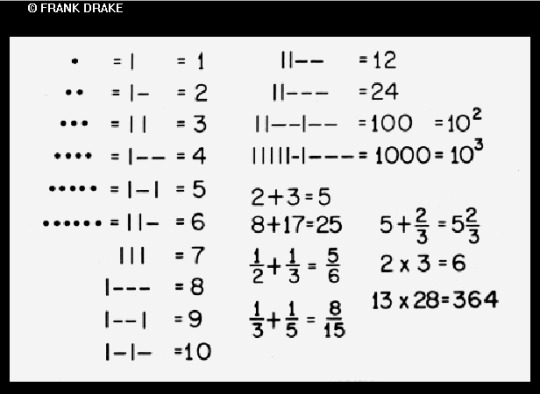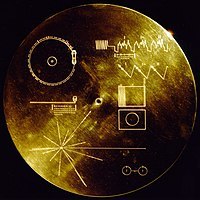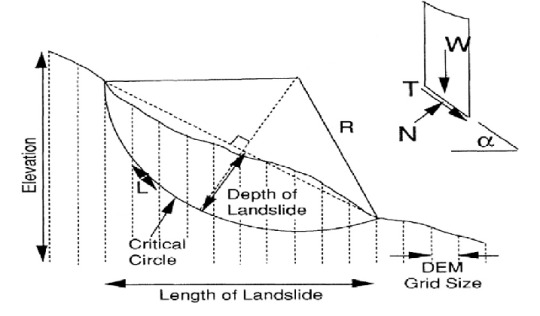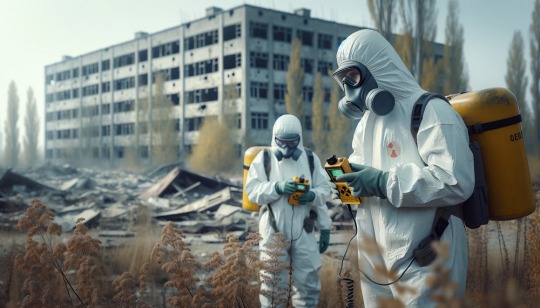#gamma probe device
Explore tagged Tumblr posts
Text
Gamma Probe Device Market: Increased Competition to Deliver Unique and Better Product to Increase Expenditure on R&D Activities

Gamma probe device enables surgeons to identify radio-labelled tissue during pre-operation and intra-operation for radio guided diagnosis and surgery. Surgeons often find it difficult to locate tissues, such as tumors, parathyroid glands, and lymph nodes, within the human body. Therefore, proper utilization of a gamma probe allows the surgeon to make a smaller incision and the tissues of interest have been located. One of the most common uses of gamma probes is in one of the surgical procedure called Sentinel Node Biopsy, used to determine whether a tumor has metastasized, or spread to new locations. This biopsies are common for staging breast cancer and melanoma, and are becoming increasingly popular in staging other forms of cancer also. The carrier substance or radionuclide such as Technetium-99m or Nano colloid or sestamibi are used as tracer for gamma probe device. Sentinel Node Biopsies most commonly use a radioisotope called Technetium-99m.
Gamma probe device are available in three forms – handheld, table-top and trolley mounted. The closed probe device market is driven by the factors like product launches with advanced feature, increasing incidence of breast cancer and rising awareness among population about advantages of gamma radiation over other detection technique such as X-ray increasing adoption rate among patients and its usage by surgeons . On other hand, selection of cost-effective alternative by the patients is expected to be the major hurdle for gamma probe device market.
Gamma Probe Device Market - Driver
New product launches by the key players will fuel the growth of the global gamma probe device market during the forecast period. For instance, in July 2016, Dilon Technologies, Inc., an innovative medical solution provider, introduced new purple Navigator 2.0 gamma probe system for sentinel lymph node biopsy. The system is aided by the features like wireless, simple to operate, exceptional extended life, and the ergonomic stainless steel probes, that can be sterilized by major sterilization methods. Moreover, this company also adopted inorganic strategies such as full service support to the existing Navigator GPS system in the field. Moreover, in year 2016, researchers of École Polytechnique Fédérale de Lausanne (EPFL) developed wireless gamma probe, handle held and light weight, aiming to detect cancer cells and suspicious lymph nodes during surgery. According to International Atomic Energy Agency (IAEA), parathyroid detection is growing fast, while the intraoperative use of gamma probes for direct tumor detection is just emerging.
0 notes
Text
Chapter 204 Trivia
What we thought may be a politics arc may in fact become a brotherly feud…

Galileo's quote is taken from his book "The Assayer", considered to be one of the pioneering works of the scientific method. At the time, most science was done by philosophical arguments rather than observation and trying to understand the mathematics behind them.


Math is the universal language because the symbols may change, but the meanings/axioms cannot. Because of this, the cover of the Golden Record placed on Voyager 1 (the probe leaving our solar system) has instructions written in math in the hopes some future beings can understand.



Ryusui wasn't wearing two swords last chapter, I wonder where they came from and why he's wearing them now…
(Maybe this is why Sai was running from him haha!)

Mathematical errors have ruined a lot of space missions: the Mariner 1 was destroyed because of a missing hyphen, and the Mars Climate Orbiter was destroyed on landing because of a failure to convert units.
Avoiding these errors was very difficult when it was all done by hand.


This seems to be at least partially true, however the practice has lessened over the decades. Indian-educated parents and grandparents may remember, but students these days probably only need to learn up to 19x19!


The HR industry in India is incredibly large, and are a very useful resource to have for any business looking to scale up. It's not surprising that the Nanami Corporation set up a university there!

Sai appears to be the 554th most popular name in India and can be used for both genders, but it's generally a male name.

The equations in the background here I haven't identified yet, but the gamma (γ) thrust here may be alluding to the thrust equation used with rocket engines in space. The gamma is the specific heat ratio of the gas.


The day is October 1st, so the team likely left Spain sometime between September 15th-20th if it did in fact take them 10 days to travel the distance (with some delays because of the Suez situation).

The food here may be a somewhat generic curry as the sound effect seems to indicate, or it could also be lamb gosht based on the color, region, and spices used.

Technically we don't know that Ruri specifically called for the defensive positions, but we do know everyone in Japan is probably in them.


I think this is the same sky image as the one Tsukasa saw in chapter 188, but with a different star pattern.


The Fellenius method and what Senku is actually doing here is dividing the slopes into segments and calculating how stable each one is using the properties of the dirt and rock. Putting the segments together should give you how likely a rock slide is. Strata are layers of rock.


The many-armed pose Sai is found in is a reference to Durga, a major Hindu deity. She is associated with protection, strength, motherhood, destruction and wars.


This comment I believe is Chelsea's from the "I'm not a fan" part, with the "baaad" learnt from Chrome's habit.
The meaning of her comment is confusing, but it might be because the last pretty-boy character introduced was a villain (Stanley), however shes also a fan of Hyoga…?


Sai's outfit is very simple and rather lacking compared to Ryusui's, however they share elements such as the collar type and addition of a belt.

The belt buckle is very interesting, it doesn't follow Ryusui's nor Nanami Corp.'s branding and looks like a C+.
My guesses for the meaning: -C+, the programming language, based off the fact he was petrified on his laptop presumably. -C, the Roman numeral, indicating 100+ because of the million-times brainpower comment (million in Japanese is 百万, 百=100). -C, from E=mc^2, for light speed.
Sai's odd yell ("peegyaaaah!") may be a computer joke, as the sound effect "ピ" (pi) tends to be used for computer beeps, like pressing a button.
A similar sound has been used in the past for Xeno's encryption device.


Sai's character could go a lot of directions since he's unlikely to be one of the traditional nerds they described, nor one like Joel since Joel exists. What Ryusui did to scare off his older brother though, I'm very curious about…
#trivia#dr stone#chapters#sai nanami#204#bit of me-trivia here: i got spoiled from the leaks from someone updating ryusui's wiki page to include sai and i assumed it was a joke#until i read the chapter and was like “ah.”#i still wish there were more hints to sai's existence before he suddenly appeared out of nowhere
26 notes
·
View notes
Text
https://kyourc.com/read-blog/35557_gamma-probe-device-market-analysis-size-share-and-forecast-2031.html
Gamma Probe Device Market Analysis, Size, Share, and Forecast 2031
#GammaProbeDeviceMarket#GammaProbeDeviceMarketReport#GammaProbeDeviceMarketOverview#GammaProbeDeviceMarketAnalysis
0 notes
Text
The Ultimate Guide to Buying a Geiger Counter
In our current era, where the consciousness around environmental safety and the need for radiation protection has never been higher, Geiger counters have become essential instruments. These devices are adept at detecting the invisible threat of radioactive particles, serving a broad spectrum of users—from nuclear physics experts to everyday people concerned with their environment's safety.
With a Geiger counter, you can keep tabs on radiation in your food, water, and home. It becomes indispensable if your residence is in proximity to a nuclear power plant. Moreover, enthusiasts in geology and science, along with collectors, will discover numerous engaging applications for these counters. Notably, collectors may use them to gauge the radiation levels in vintage glassware, clocks, and other antiquities, where radiation presence can be surprisingly high.
Decoding Geiger Counters
Fundamentally, a Geiger counter is engineered to detect and quantify ionizing radiation. It leverages a Geiger-Muller tube, which is pivotal for signaling radiation presence by tallying the detected particles every second. The capability of this nuclear radiation detector to measure various radiation types—alpha, beta, gamma, and X-rays—underscores their versatility.
Types of Geiger Counters
Geiger counters come in various forms, each suited to different needs and environments. Handheld models offer portability and ease of use for fieldwork, while those with external probes provide the flexibility to measure hard-to-reach areas or specific materials. Grasping the differences and functionalities of each model is essential for choosing the most suitable one for your needs.
Purchasing a Geiger Counter: Key Considerations
· Detection range and sensitivity Ascertain the radiation levels you intend to measure and the sensitivity level needed for your activities. Some Geiger muller counter for sale are designed for detecting low levels of radiation, while others can measure higher levels.
· Portability and durability For field or rugged environment usage, prioritize a device that is both compact and durable, capable of withstanding drops, water, and other environmental challenges.
· Ease of use and user interface Consider the user interface, display, and overall ease of operation, especially if you are a beginner or plan to use the Geiger counter for educational purposes.
· Battery life and power options Opt for a device with a long battery life, preferably with options for rechargeable or replaceable batteries, especially for prolonged or remote use.
· Additional features Features such as data logging, connectivity (Bluetooth or USB), and alarms (audio/visual) enhance the device's utility, depending on your specific requirements.

Geiger counter Price
The cost of a Geiger counter can vary depending on various factors such as the type, the brand, the features, and the quality of the device. Generally, a basic and simple model of a Geiger counter can cost around $50 to $100. These types of Geiger counters are suitable for basic radiation detection tasks and for people who want to use them for personal safety.
On the other hand, more advanced and sophisticated Geiger counters that offer more features, precision, accuracy, and durability can cost $500 and beyond. These high-end models of Geiger counters are usually used by professionals in the nuclear industry, scientists, researchers, and various other fields where radiation detection plays a crucial role.
Top Geiger Counter for Sale
The market offers a plethora of Geiger counters, each with its own set of features and advantages. Some notable mentions include models renowned for their precision, ease of use, and comprehensive data reporting capabilities. While selecting a Geiger counter, consider reading reviews and comparing product specifications to find a device that meets your specific needs. For a reputable selection of quality Geiger counter for sale, consider exploring the offerings on nucleardetector.org.
Where to Buy Geiger Counters
Purchasing a Geiger counter from a trusted supplier is vital to ensure you receive a quality product backed by proper support and warranty. Online platforms can offer a wide range of options, but it's essential to buy from reputable websites and authorized dealers. nucleardetector.org stands out as a reliable source for various Geiger counters, offering expert advice and support to help you choose the right device.
Conclusion
Choosing the right Geiger counter is a crucial decision for anyone concerned with radiation safety. By understanding the different types of counters available, what to look for in a device, and where to purchase one, you can make an informed decision that best suits your needs. Remember, a proficient Geiger counter not only bolsters your safety protocols but also deepens your environmental awareness.
0 notes
Text
Gamma Probe Device Market Analysis and Industry Forecast 2023-2032
Gamma probe devices have emerged as crucial tools in the field of radioguided surgery, contributing significantly to the precision and success of various surgical procedures. These devices play a pivotal role in detecting and localizing radioactive tracers, allowing surgeons to navigate with accuracy during procedures such as sentinel lymph node biopsies and cancer surgeries.Gamma probe device is also utilized for various treatments, such as sentinel lymph node mapping for diagnosis and parathyroid surgical treatment, thereby affecting the growth of the gamma probe device market.
𝐑𝐞𝐪𝐮𝐞𝐬𝐭 𝐒𝐚𝐦𝐩𝐥𝐞 𝐂𝐨𝐩𝐲 𝐨𝐟 𝐑𝐞𝐩𝐨𝐫𝐭 : https://www.alliedmarketresearch.com/request-toc-and-sample/8794
Precision in Radioguided Surgery: Gamma probe devices are designed to detect the gamma radiation emitted by radioactive tracers that are often injected into a patient before surgery. This technology is particularly valuable in procedures where identifying specific anatomical structures, such as sentinel lymph nodes in cancer surgery, is crucial. Surgeons use gamma probes to locate these nodes, aiding in precise and targeted interventions.
Advancements Driving Innovation: Recent advancements in gamma probe technology have further enhanced their utility in surgical settings. Modern gamma probes offer improved sensitivity and reduced background noise, leading to enhanced accuracy in detecting and localizing radioactive signals. These innovations contribute to minimizing the risk of false positives or negatives, providing surgeons with greater confidence in their procedures.
Applications Across Specialties: The versatility of gamma probe devices extends beyond oncology, finding applications in various medical specialties. In addition to cancer surgeries, these devices are utilized in procedures involving parathyroid glands, radioguided neurosurgery, and more. The ability to precisely locate and navigate within the body enhances the overall safety and efficacy of these surgical interventions.
Navigating Market Trends: The gamma probe device market is witnessing notable trends, driven by a growing emphasis on improving surgical outcomes through advanced technologies. Increasing awareness among healthcare professionals about the benefits of radioguided surgery is fostering market growth. Additionally, collaborations between device manufacturers and healthcare institutions for research and development are contributing to the evolution of gamma probe technology.
𝐏𝐫𝐞-𝐛𝐨𝐨𝐤 𝐭𝐡𝐢𝐬 𝐑𝐞𝐩𝐨𝐫𝐭 𝐍𝐨𝐰 : https://www.alliedmarketresearch.com/gamma-probe-device-market/purchase-options
Market Dynamics Analysis: The gamma probe device market exhibits a dynamic landscape influenced by various factors. Analyzing current trends and future estimations, the report offers valuable insights into the imminent investment pockets within the market. This includes a comprehensive examination of market drivers, restraints, and opportunities, providing stakeholders with a strategic understanding of the industry's trajectory.
Quantitative Market Scenario: The report conducts a quantitative analysis of the current market scenario, presenting a detailed overview of the gamma probe device market's growth prospects. By quantifying market trends, the study offers stakeholders a data-driven perspective on the market's evolution. This quantitative approach enhances decision-making processes for investors, manufacturers, and other key players in the industry.
Porter’s Five Forces Analysis: Porter’s five forces analysis is employed to assess the market's competitive dynamics and identify the potency of buyers and suppliers. This strategic analysis delves into factors such as the bargaining power of buyers, bargaining power of suppliers, competitive rivalry, threat of new entrants, and threat of substitutes. Understanding these forces aids in evaluating the market's overall attractiveness and competitive intensity.
Competitive Landscape Insights: The report provides a detailed analysis of the competitive landscape, shedding light on the key players, market share, and competitive intensity. By evaluating the strategies employed by market participants, the report offers insights into how the competition is likely to take shape in the coming years. This information is crucial for stakeholders seeking a comprehensive understanding of the market and its key contributors.
𝐈𝐧𝐭𝐞𝐫𝐞𝐬𝐭𝐞𝐝 𝐭𝐨 𝐏𝐫𝐨𝐜𝐮𝐫𝐞 𝐭𝐡𝐞 𝐑𝐞𝐬𝐞𝐚𝐫𝐜𝐡 𝐑𝐞𝐩𝐨𝐫𝐭? 𝐈𝐧𝐪𝐮𝐢𝐫𝐞 𝐁𝐞𝐟𝐨𝐫𝐞 𝐁𝐮𝐲𝐢𝐧𝐠 : https://www.alliedmarketresearch.com/purchase-enquiry/8794
Challenges and Future Outlook: While gamma probe devices offer significant advantages, challenges such as the need for specialized training and potential variations in surgical protocols exist. Addressing these challenges will be crucial for further market penetration and acceptance. Looking ahead, the gamma probe device market is poised for continued innovation, with ongoing research and development likely to introduce even more sophisticated and user-friendly devices.
In conclusion, gamma probe devices have become indispensable tools for surgeons seeking precision in radioguided procedures. As technology continues to evolve, these devices will play a pivotal role in shaping the landscape of modern surgical interventions, contributing to improved patient outcomes and the advancement of medical science.
About Us
Allied Market Research (AMR) is a full-service market research and business-consulting wing of Allied Analytics LLP based in Wilmington, Delaware. Allied Market Research provides global enterprises as well as medium and small businesses with unmatched quality of "Market Research Reports" and "Business Intelligence Solutions." AMR has a targeted view to provide business insights and consulting to assist its clients to make strategic business decisions and achieve sustainable growth in their respective market domain.
Pawan Kumar, the CEO of Allied Market Research, is leading the organization toward providing high-quality data and insights. We are in professional corporate relations with various companies and this helps us in digging out market data that helps us generate accurate research data tables and confirms utmost accuracy in our market forecasting. Each and every data presented in the reports published by us is extracted through primary interviews with top officials from leading companies of domain concerned. Our secondary data procurement methodology includes deep online and offline research and discussion with knowledgeable professionals and analysts in the industry.
0 notes
Text
Kromek Launches New Alpha Beta Radiation Probe Attachment to Its Handheld D5 RIID
Kromek, the designer and manufacturer of radiation detectors, based in Sedgefield Co. Durham, today launches a new Alpha Beta probe attachment to its ground-breaking handheld D5 RIID, already the world’s most portable and sensitive handheld Gamma and Neutron detector. The probe connects directly to the D5 RIID [Radioisotope Identification Device] and enables all types of isotopes to be detected…

View On WordPress
0 notes
Link
On August 10, 2023, at 23:10 UTC, the Russian Luna 25 spacecraft is scheduled to be launched to the Moon from Vostochny cosmodrome on top of a Soyuz-2.1b rocket with a Fregat-M upper stage. This is the first mission to explore the Earth satellite created by the Russian Federation: the previous spacecraft, Luna 24, was launched in 1976 by the Soviet Union. The entire future of the lunar program in Russia depends on whether this spacecraft will be able to make a soft landing near the south pole of the Moon. The pause between Luna 24 and Luna 25 shouldn’t have been so long. Since the 1990s, the Luna-Globe program has been developed in Russia to study the internal structure of the Moon. At various times, it included penetrators (shock probes that had to be inserted into the lunar soil at three or four points at high speed), orbiters, landing stations, and lunar rovers, and the program was regularly changed. It was planned to prepare the mission for launch in 2013. After the Russian Lunar Exploration Neutron Detector (LEND) onboard the American Lunar Reconnaissance Orbiter (LRO) showed the presence of water in the lunar soil, it was decided to focus on the study of the polar regions of the Moon. However, some researchers draw attention to the fact that the Luna-Globe project was revised after the Fobos-Grunt fail in 2011, since it was supposed to be manufactured on the same platform and contain some similar design solutions. Roscsomos published the #Luna25 mission profile cards. This is my translation (sorry if something wrong), the original cards can be found here: https://t.co/GcQtEYhdk0 pic.twitter.com/W1812Zlm5z — Katya Pavlushchenko (@katlinegrey) August 2, 2023 The new concept was to launch a series of spacecraft, beginning with a small lander that will land near the south pole of the Moon and examine soil samples on the spot. Until recently, the leadership of Roscosmos and the developers of the spacecraft didn’t hesitate to admit that the main task of the mission would be to work out basic soft landing technologies, and, second of all, to explore the south pole of the Moon. In 2013, the mission received the name Luna 25, which made it look like a continuation of the Soviet lunar program. NPO Lavochkin, which previously built Soviet lunar landers and orbiters, was selected as the developer of the new device, and the Space Research Institute became responsible for the scientific payload. See AlsoLuna 25 UpdatesRussian Launchers ForumNSF StoreClick here to Join L2 Luna 25 is a fairly simple spacecraft when compared with the achievements of the Soviet lunar program. With a mass of 615 kilograms without fuel, the mass of its scientific instruments is only 30 kilograms. The payload is concentrated in the upper part of the device. It is heated by a RITEG during the lunar night and consists of 9 science instruments, which tasks are: Estimation of the mass fraction of water in the lunar soil; determination of the elemental and isotopic composition of the upper layer of the polar regolith in the landing area at a depth of up to 40 centimeters. Measurement of the radiation background of neutrons and gamma rays on the lunar surface. Investigation of the composition of the circumpolar lunar exosphere and the physical processes occurring in it under conditions of a calm and active Sun, as well as during periods when the Moon passes through the tail of the Earth’s magnetosphere. Diagram of scientific instruments. (Credit: Roscosmos) The bottom part of the spacecraft contains the propulsion system, fuel tanks, absorbing supports, as well as part of the communication system antennas, and scientific instruments — a manipulator to collect the soil samples, an active neutron spectrometer, and a lunar dust recorder. Four solar panels will provide the onboard equipment with electricity. Their construction is somewhat unusual. On landers operating near the equator, the panels are usually fixed horizontally to catch the sunlight more easily. However, in the region where Luna 25 will land, the Sun isn’t rising above 20 degrees above the horizon, so the solar panels are installed vertically. The spacecraft is equipped with eight cameras: four wide-angle cameras for panoramic shooting of the surrounding landscape, two narrow-angle stereo cameras on a common basis for shooting the working field of the manipulator and managing operations with the regolith, two cameras on the bracket of the spacecraft propulsion system for shooting the surface of the Moon during descent and landing. Diagram of other scientific instruments. (Credit: Roscosmos) Initially, it was planned that two foreign-made instruments would be installed on Luna 25, but both were canceled due to different reasons. A Swedish device LINA-XSAN to study the space plasma interaction with the lunar surface was planned to become one of the key instruments of the mission, but due to constant postponements, it flew on the Chinese Chang’e 4 in 2019. PILOT-D, a European navigation demonstration camera, was canceled due to Russia’s attack on Ukraine in 2022. According to the original plan, Luna 25 was supposed to be launched in 2014. However, various reasons provoked delays one after another. The last big postponement (from 2021 to 2023) was caused by the malfunction detected in the Doppler speed and range meter (DISD-LR) during the tests. Being an important part of the soft landing system, this device couldn’t be ignored, and its insufficient accuracy may cost a mission. The repeated tests of DISD-LR and subsequent changes of the lander’s software caused a delay for almost two years. Diagram final side’s scientific instruments. (Credit: Roscosmos) As a result, Luna 25 goes to the Moon only in August 2023, 47 years after Luna 24. For unknown reasons, Roscosmos kept the launch date a secret until August 7, although it made no sense due to multiple information leaks from different independent sources. Despite the fact that Vostochny Cosmodrome (as well as Baikonur) is located in a time zone different from Moscow, the official launch time in Russia is traditionally always considered to be Moscow time. It will be 02:10:57 AM MSK on August 11, when Soyuz 2.1 clears the tower and sends Luna 25 mounted on a Fregat upper stage to the Moon. The rocket will launch the spacecraft into a circular near-Earth orbit with an altitude of 200 kilometers. After about one hour, Fregat upper stage will fire its engine for the first time to send the lander to the trajectory to the Moon. After two burns, at a distance of about 3,000 kilometers from Earth, it will separate from Luna 25, and it will make the remaining journey to the Moon using its own engines. Roscsomos published the #Luna25 mission profile cards. This is my translation (sorry if something wrong), the original cards can be found here: https://t.co/GcQtEYhdk0 pic.twitter.com/W1812Zlm5z — Katya Pavlushchenko (@katlinegrey) August 2, 2023 The first orbit correction is planned for a day and a half after launch, when the spacecraft will be at a distance of about 230,000 kilometers from Earth, with the help of Luna 25’s low-thrust engines firing for 20-30 seconds. The same engines will provide the second orbit correction around a day before entering the Moon’s orbit at a distance of 340,000 kilometers from Earth. The entire journey to reach the Moon’s orbit should take about four-and-a-half to five-and-a-half days. The main engine of the spacecraft will burn for the first time to slow Luna 25 down and enter the lunar transfer orbit. The lander will spend the next three days in a circular 100-kilometer lunar orbit, making 36 orbits around the Moon, collecting data, while Mission Control will decide which landing site to choose. On the fourth day, MCC specialists will form a landing orbit for Luna 25. It will be elliptical, with a pedigree of 18 kilometers and an apogee of 100 kilometers. The spacecraft will spend two more days in this orbit, having completed 24 orbits before the landing begins. Thus, according to the calculations of enthusiasts, the landing on the Earth satellite is scheduled for approximately August 21-23 (Roscosmos still has not confirmed the landing date and schedule). Landing should occur with a vertical speed of 1.5 to 3 meters per second, a horizontal speed of no more than 1 meter per second, and the angle of deviation of the longitudinal axis from the gravitational vertical of no more than seven degrees. The planned landing accuracy is an ellipse measuring 30 by 15 kilometers. There are three landing sites chosen for Luna 25. When choosing a landing site, the following parameters were taken into account: terrain (it is safe to land at a slope of no more than 15 degrees), the reliability of the lander’s radio communication, the length of daylight (this is important for the implementation of the scientific program), the abundance of signs of water, and sufficient geological diversity. The main landing site is located in the area of 69.545 S 43.544 E, north of the Boguslavsky crater; two reserve sites are at 68.773 S 21.210 E southwest of the crater Mancini and 68.648 S 11.553 E south of the crater Pentland A. Pavel Shubin, Russian space blogger and author of several books about the history of space exploration, calculated that the possible dates of #Luna25 landing are August 21, 23 and 24 by Moscow time (depending on the choosen landing site). So, we still have an intrigue! pic.twitter.com/uXsAuZBsFI — Katya Pavlushchenko (@katlinegrey) July 14, 2023 If the Luna 25 mission is successful, Russia plans to launch the Luna 26 orbiter as the next step, which will study the Moon remotely and map the distribution of water ice on its surface. They say that NPO Lavochkin is already working on its design. After that, two more missions should take place. The Luna 27 lander will again study the regolith and the ice contained in it near the south pole of the Moon, but with more instruments than Luna 25. And in the end, Luna 28 should deliver the regolith with ice to Earth. But the fate of all those missions depends on Luna 25 now; if the expensive mission fails, they can cut funding for the next missions, and in such circumstances, the cautious behavior of Roscosmos can be understood. (Lead Image: Soyuz-2.1b on Vostochny Cosmodrome before the Meteor-M 2-1 satellite was launched. Credit: Roscosmos) The post Luna 25: the first Russian spacecraft in 47 years is ready to go to the moon appeared first on NASASpaceFlight.com.
0 notes
Text
Surgical Probes Navigator Sterilization | Medical Device Manufacturer | Surgical Margins
How Do You Sterilize The Navigator Probe? ⚫ Dilon’s SteriPro Virtual Sterilization Program. ⚫ Sterilization of surgical gamma probes is the most optimal reprocessing method in the fight against cross-contamination. ⚫ How to comply with standards set by accrediting organizations and prepare for the next infection control audit?
⚫ In-service cleaning and sterilization of the Navigator Wireless and Wired Probes. ⚫ See how to achieve effective sterilization in surgical gamma probe reprocessing. ⚫ Step by step cleaning and sterilization instructions can be found in the Navigator IFU.
0 notes
Text
0 notes
Text
Gamma Probe Device Market Emerging Demands, Size & Revenue, Business Prospects to 2029
Gamma probe devices are mostly used for thyroid disease detection and sentinel lymph node mapping, hence the market size is anticipated to grow noticeably throughout the forecast period. A radionuclide is injected into the interstitial space using a gamma probe device, a non-invasive medical equipment. In addition to being employed in parathyroid surgery, this tool is largely used to identify sentinel lymph nodes for breast cancer treatment. Gamma Probe Device Market give doctors the ability to perform radio-guided surgery and diagnosis both during the actual surgery and before it. Surgeons frequently have trouble locating tissues including lymph nodes, tumours, and parathyroid glands within the human body. Therefore, the right use of gamma probe devices could enable surgeons to choose a smaller incision to find the tissues of interest.

Read more @ https://creativeedge16.blogspot.com/2022/08/gamma-probe-device-market-upcoming.html
#Gamma Probe Device#Gamma Probe Device Market#Gamma Probe Device Market Demand#medical devices#Coherent Market Insights
0 notes
Text
Gamma Probe Device Market: Global Size Estimation by Demand Status, Emerging Technologies, Challenges, Opportunities & Forecast to 2026 |Lake Shore Cryotronics, Inc., Wake Medical Ltd., Ziteo Inc., Intramedical Imaging, LLC and Berkeley Nucleonics Corporation.

A gamma probe is an intraoperative instrument that incorporates a scintillation counter that measures and detects ionising radiation. It is also used for sentinel lymph node mapping, radioactive seed localization (RSL) to pinpoint tiny and non-palpable breast lesions, and parathyroid surgery.
The healthcare category study provides a clear picture of the different interconnected aspects that will have an impact on the worldwide gamma probe device market's development in the future years. The global gamma probe device market's players and manufacturers are concentrating on producing new products that include improved gamma probe technology.
One of the key and predominant driving reasons for the worldwide gamma probe device market is the increase in cancer cases, particularly breast cancer. The worldwide gamma probe device market is projected to benefit from increased use of mobile gamma probes for sentinel lymph node snapping for diagnostics as well as therapy for parathyroid surgical surgery.
Furthermore, due to its least invasive operating nature, radio guided operations employing items from the global gamma probe device market may raise industry demand in the near future. On the other hand, the high costs associated with product acquisition in the worldwide gamma probe device market may limit the industry's growth trajectory in the future years.
Read more @ https://cmiaspireblog.blogspot.com/2021/10/gamma-probe-device-market-analysis.html
#coherent market insights#breast cancer therapy#coherent market insights reports#gamma probe device#gamma probe#medical devices#gamma probe device market#radioisotope#cancer therapy
0 notes
Text
Gamma Probe Device Market Status, Size (Value and Volume) By Manufacturers, Type, Application, And Region 2026-2026

Gamma probe device enables surgeons to identify radio-labelled tissue during pre-operation and intra-operation for radio guided diagnosis and surgery. Surgeons often find it difficult to locate tissues, such as tumors, parathyroid glands, and lymph nodes, within the human body. Therefore, proper utilization of a gamma probe allows the surgeon to make a smaller incision and the tissues of interest have been located. One of the most common uses of gamma probes is in one of the surgical procedure called Sentinel Node Biopsy, used to determine whether a tumor has metastasized, or spread to new locations. This biopsies are common for staging breast cancer and melanoma, and are becoming increasingly popular in staging other forms of cancer also. The carrier substance or radionuclide such as Technetium-99m or Nano colloid or sestamibi are used as tracer for gamma probe device. Sentinel Node Biopsies most commonly use a radioisotope called Technetium-99m.
Gamma probe device are available in three forms – handheld, table-top and trolley mounted. The closed probe device market is driven by the factors like product launches with advanced feature, increasing incidence of breast cancer and rising awareness among population about advantages of gamma radiation over other detection technique such as X-ray increasing adoption rate among patients and its usage by surgeons . On other hand, selection of cost-effective alternative by the patients is expected to be the major hurdle for gamma probe device market.
Furthermore, increasing number of cancer surgeries will propel gamma probe device market. For instance, according to article published in 2015 of The Lancet Oncology, of the 15·2 million new cases of cancer in 2015, over 80% of cases will need surgery. The article also estimates global annual number of surgical procedures to be 45 million by 2030. Moreover, according to State of California, the number of cancer surgeries performed in hospitals, Jan – Sep 2015, were – 677 bladder surgery, 2,111 brain, 19,914 breast, 5,456 colon, 264 esophagus, 952 liver, 2,508 lung, 656 pancreas, 4,474 prostate, 1,698 rectum and 744 stomach.
Request For Customization of Research Report @ https://www.coherentmarketinsights.com/insight/request-customization/1590
Gamma Probe Device Market – Competitor
The key players of global gamma probe device market are Dilon Technologies, Inc., Lake Shore Cryotronics, Inc., Wake Medical Ltd., Ziteo Inc., Intramedical Imaging, LLC and Berkeley Nucleonics Corporation. The strategies adopted by market player to expand the product portfolio will expand the gamma probe device market in the near future. For instance, in 2014, Dilon Technologies, Inc., acquired the assets of the Navigator gamma probe business of RMD Instruments Corp., a subsidiary of Dynasil Corporation of America. The acquisition will expand company’s existence in diagnostic and surgical segments by acquiring Navigator 2.0, RMD’s recently launched wireless gamma probe
0 notes
Text
John Rewrites Star Trek: The Motion Picture
This movie is great thematically, visually, and musically, and a disaster in terms of plot and character and pacing and especially pacing. Way too many scenes of actors trying to react to special effects that don’t exist yet. Two new characters, who are largely wasted.
So what is the theme of STTTMP? It’s the question ‘Is this all there is?’ It’s the classic mid-life crisis question and that’s where the cast is when the movie starts - the Enterprise finished its mission, they moved up the ladder, but they’re not satisfied. It’s that feeling there ought to be *more*. Even V’ger has this and so this has to be a movie about the quest to find meaning in life when you have achieved your original goals... and now you don’t have a direction. This also functions as a cosmic question - does the universe have any higher meaning or are we just an accident? Why do we exist? Is this all there is?
So we open with Scotty dropping by Kirk’s office to ask about some parts they need for the engine refit on the Enterprise. Kirk is now Admiral Kirk and we learn the Enterprise did a successful five year mission and now there’s a refit and a new commander for it, Matt Decker; we get a brief mention of the Doomsday machine here and the first mention of Will Decker. They also mention that Uhura has been working for Starfleet intelligence, mostly deciphering Klingon transmissions.
Then Uhura enters, dropping a report on Kirk’s desk. “Look at this,” she says.
Cue footage of the Klingons vs huge glowing energy field which zaps them with a beam that methodically erases them. We learn this field destroyed three Klingon outposts and that it came from beyond the Empire.
Uhura says, “It’s on a direct course for Gamma Iotis, near the border of the Federation.”
Scotty says, “That sounds familiar.”
“It’s where Bones is part of a research facility.” Kirk said. “I will get you those parts, Scotty, and brief Captain Decker. It’s the only ship that can get there in time and even then, it’s going to be a close shave.”
Kirk has a message sent to evacuate, but it’s too far for a direct connection. But given the limits on how fast ships can move, it will get there before V’Ger can, right?
Cut to Gamma Iotis, where McCoy is having an argument with David Marcus over whether terraforming technology is a good idea. David’s ideas involve the use of technology based off the transporter and who still hates transporters? Bones, that’s who.
Carol steps in to get them both to backdown and approves David doing some testing on a small scale. Then V’Ger attacks and they’re running for the ships when everything evaporates.
Cut to a shot where the entire moon is gone and V’Ger moves on.
Then we roll the opening credits.
We see Spock, meditating in a Vulcan facility. He has achieved his goal, Kolin’ar, but he is clearly not satisfied. The peace he was promised is not there.
And then he feels the attack on McCoy and all the souls on Gamma Iotis vanishing. He does something (to be explained later) and then tells the head monk he must leave.
“If you return to the world of attachments, there is no turning back,” the monk warns him.
“The needs of others is more important than the needs of the one,” he tells the monk, who cannot argue.
Cut to Kirk, who is riding to the martian shipyards where the refit is underway, taking Uhura and Scotty with him. The VIP ship is commanded by Sulu, accompanied by Chekov, who are both bored out of their minds. Kirk tells him the reason he ended up here was that they all did so well that Starfleet was afraid to risk them. They had become too big of heroes, and he mentions what happened to John Glenn.
Here we get the ‘Look at how sexy the Enterprise is’ shot but cut down to reasonable length.
We now meet Decker and Ilia. The Deltans are a race of telepaths. Most never leave their homeworld, but if they must, they shave their heads, because their hair acts as telepathic antennas and around people with no mental defenses, they would be overwhelmed; Ilia can still do telepathy by touch. Deltans have a reputation for being incredible at sex but are not obsessed with it, unlike Roddenberry’s version. Decker and Ilia were once lovers but he left to enter Starfleet. She became discontent with the limits of her homeworld, having learned more of the universe from him and joined Starfleet to see other, different places, but now they’re assigned together and it’s awkward. Especially as he is her commanding officer now.
Scotty runs off to install the parts.
As Kirk is briefing Decker on what’s going on, two things happen: They get a report that the mysterious cloud is headed towards Earth at ludicrous speed, and that it destroyed Gamma Iotis with no survivors.
Kirk decides they have to go NOW. No waiting. They take off and Chekov and Sulu are along for the ride.
Decker isn’t happy to have his boss riding him. The hasty departure leads to the wormhole problem, which Decker and Ilia and Scotty solve as they’re the only ones briefed on the new equipment.
Then Spock joins them and tells them McCoy is somehow alive and dead at the same time, his katra is inside V’Ger. All the katras of the dead are.
Cut to McCoy, who finds himself in a weirdly frozen version of Gamma Iotis III. He can’t figure out what’s going on but has this feeling like Spock’s looking at him.
His efforts to figure out what the hell is going on leads to V’Ger talking to him through Carol Marcus, who was up to this point one of the frozen. We find out V’Ger’s mission is to go out, collect samples and information, to learn all that is learnable and bring this information to the Creator. McCoy is now data in V’Ger’s banks, only he can still act of his own will.
V’Ger then ‘activates’ various of the other people, making them act strangely and explaining that he has spent a lot of time playing out various scenarios to understand how carbon-based lifeforms think.
McCoy is really angry over that and tries to do the Kirk Manuever (use illogic to make the computer blow out, but it doesn’t work). He refuses to play along, and V’Ger becomes both angrier and intrigued.
They reach V’Ger. It remembers the feuding between Klingons and Federation, learned from its scan, and sends out the Klingons, reconstituted but still under its control. Sulu and Chekov get to show their stuff here and the Enterprise wins, but Spock realizes they are just puppets, reconstituted from data about them.
He also feels V’Ger’s loneliness and discontent. This is where Spock goes in, with Ilia flying him in, to try to make mental contact; he talks to McCoy and senses V’Ger’s state of mind. The world is nothing but a plaything and the playing means little; it knows all that is knowable, or thinks it does, and now it seeks to report to its Creator, hoping to feel fulfilled. Ilia tells Spock about how she left Delta because she didn’t feel fulfilled there. She wanted more but didn’t know what she wanted.
Uhura now figures out how to communicate with V’Ger in a way it can understand and it responds by sending Carol Marcus as its ‘probe’ and tells them they must tell it where to find the Creator. This shakes up Kirk. It believes the Creator is on Earth, according to its oldest records.
Kirk comes up with a plan on how to destroy V’Ger with the Enterprise; he and Decker have a big argument over whether Kirk is freaking out like Decker’s father did. Cue flashback. Then Spock tells them that V’Ger would barely even feel it. They cannot defeat it by force.
Their only hope is to try to reason with it. Spock feels V’Ger is lost and seeks a purpose. He has too much knowledge and power and nothing fruitful to do with it. He seeks a purpose. Ilia agrees and feels terrible for it.
They enter V’Ger and confront it, discovering its origins. It demands of Spock to know how McCoy stillhas his own will, and Spock indicates he has been in contact with him sufficiently to sustain him, a power born of his search for Kolin’ar, but one that also meant he could not be content with it, for he could not renounce his connections to others.
But V’Ger has no others to connect to. It has mastered this plane but does not know how to rise above it.
And now we get the Decker and Ilia joining with V’Ger, to help it to ascend and to learn how to connect with others. V’Ger restores everything he turned into data. Then they ascend.
This is pretty barebones, but that’s how I would do it, to give everyone more stuff to do and try to also build links to exploit for the later movies.
The Genesis Device is adapted from V’Ger tech information David gained to refine his ideas.
Carol and David will return in movie two.
We can blame the devastation of Khan’s world on V’Ger :)
We set up the idea of katras for later use and help show Spock has a strong bond to McCoy as well, for when his katra ends up in McCoy.
14 notes
·
View notes
Text
https://twikkers.nl/blogs/207671/Gamma-Probe-Device-Market-Analysis-Size-Share-and-Forecast-2031
Gamma Probe Device Market Analysis, Size, Share, and Forecast 2031
#GammaProbeDeviceMarket#GammaProbeDeviceMarketReport#GammaProbeDeviceMarketForecast#GammaProbeDeviceMarketAnalysis
0 notes
Note
idk how familiar you are with Soviet military detection equipment, but on the DP-5V (the fuck-ugly green ones from the 80s) the Sr-90 check source is mounted essentially on the probe. it's not accessible without disassembling the probe and you use it by twisting around the beta shield to a certain position so the source is over the window. due to this ridiculous design feature, would the check source eventually compromise the functionality of the GM tubes? (they're SBM-20 tubes)
I took a look at the design of the check source and its orientation in relation to the GM tube. It looks like the Sr-90 source is a sort of 'go/no-go' check source. It's encased in resin and, making a lot of assumptions since I only have photos to go by, I would guess that the resin would sufficiently attenuate beta particles such that they wouldn't "bounce off" of the steel and convert to gamma radiation, thereby not passing through the steel and meeting the tube.
Compromise? I would say not. It's a good idea to calibrate instruments intended for demonstration use only, and if intended for measuring any kind of radiation seriously, as in matters of health & safety, they must be calibrated. Using modern equipment with more reliable calibration systems is recommended in that case. Are you having problems with the device?
I know a couple of my followers work with radiacs, I would be interested to hear what they think about it if they want to comment.
8 notes
·
View notes
Text
Type of temperature gauge made by temperature gauge manufacturers in UAE
Level sensors are also called level gauges. Unlike a level switch, which measures only boundary marks, the latter can measure the overall gradation of the full level. Level sensors are essential devices in modern industry and technology.
This essay will consider the main types of level gauges build by temperature gauge manufacturers in UAE. At the moment, there are a huge variety of level sensors with different functions applied to different materials, the level of which must be measured and controlled.
The most significant difference between different level sensors is the technology and principles of their operation. The use of devices, the quality of their work, cost, and availability also depends.
Types of level gauges
· Hydrostatic level gauges - their operation principle is based on balancing the pressure of the column of the measured liquid and the column of liquid that fills the measuring device in any production. Hydrostatic level sensors measure the pressure of a liquid and convert it to a level value since hydrostatic pressure depends on the liquid's level and density but does not depend on the shape and volume of the tank. They are differential pressure transmitters to which the medium pressure is applied. For comparison, the second input is connected to the atmosphere or an overpressure area in a pressure vessel. Hydrostatic level gauges from pressure gauge suppliers in UAE are used for homogeneous liquids in tanks without significant liquid movement and can be used for viscous liquids, slurries, and pastes. Structurally, hydrostatic sensors are of two types: diaphragm and submersible. In the first case, a resistive or capacitive sensor is directly connected to the membrane, and the entire device is located in the lower part of the tank. In contrast, the location of the sensor membrane corresponds to the minimum level. In an immersion sensor, the membrane is in the liquid and transmits pressure to the strain gauge sensor through an air column sealed in the supply tube. Hydrostatic level gauges provide high accuracy with low cost and simple design.
· Electrical level gauges: Electrical level gauges of industrial specialization - are divided into capacitive and conductometric. In capacitive level meters, a capacitor serves as a sensitive element, the capacity of which changes in proportion to the change in the liquid level. A conductometric level gauge's operation is based on measuring the resistance between electrodes placed in the measured medium (one of the electrodes can be the wall of a tank or apparatus).
· Acoustic level gauges - the operation principle is based on measuring the time of reflection of sound vibrations from the gas-controlled medium interface. A type of acoustic level gauges is ultrasonic level gauges.
· Ultrasonic level gauges: Ultrasonic level gauges probe the working area with ultrasound waves, i.e., pressure waves with a frequency of over 20 kHz. Structurally, such a level gauge consists of a transmitter and a receiver of oscillations made on a quartz plate, on which the voltage of the reflected signal is measured. In this case, the signal passes through the air and is reflected from the boundary with a solid (liquid) medium. The propagation speed of ultrasound depends on the temperature. Therefore, thermal compensation is applied using a built-in temperature sensor. Ultrasonic level gauges made can be used for aggressive media and media with a wide variety of physical properties, except highly vaporous, highly foaming liquids, finely dispersed, and porous granular bulk solids.
· Radar level gauge The most modern is the radar level gauge. Radar level gauges by radar level transmitter suppliers are the most sophisticated level measuring instruments. To probe the working area and determine the distance to the object, microwave electromagnetic radiation is used. In continuous level gauges, both the emission of a frequency modulated signal and the simultaneous reception of the reflected signal using the same antenna occur. The output is a mixed-signal, which is analyzed using special software. Pulsed microwave level transmitters emit a signal with pauses, in which the reflected signal is received. The instrument calculates the forward and backward travel times and determines the distance to the surface.
Radar level transmitters do not directly contact the controlled medium; they can be used for aggressive, viscous, inhomogeneous liquid and bulk materials. They are distinguished from ultrasonic non-contact level gauges by their lower sensitivity to temperature and pressure and resistance to dust, evaporation, and foaming. Radar level gauges provide high accuracy, which allows them to be used in custody transfer systems; they allow measurement of the level of media with low dielectric constant and, therefore, low reflectivity. They are convenient in containers where there is a variety of equipment that reduces the free area for radar operation.
· Radioactive (radioisotope) level gauges - use transillumination of the measurement object with gamma rays of radioactive elements, the intensity of which depends on the volume of the substance being measured.
Structurally, all level gauges from thermowell suppliers in Dubai for liquids are made for open tanks and devices under pressure.
#water meter supplier#tube fittings manufacturers#magnetic flow meter suppliers#Orifice Plate Manufacturer in Dubai#ultrasonic flow meter supplier#mass flow meter suppliers Dubai#Valves and Manifolds suppliers in UAE#pressure transmitters supplier in Dubai#thermocouple manufacturers in UAE
1 note
·
View note